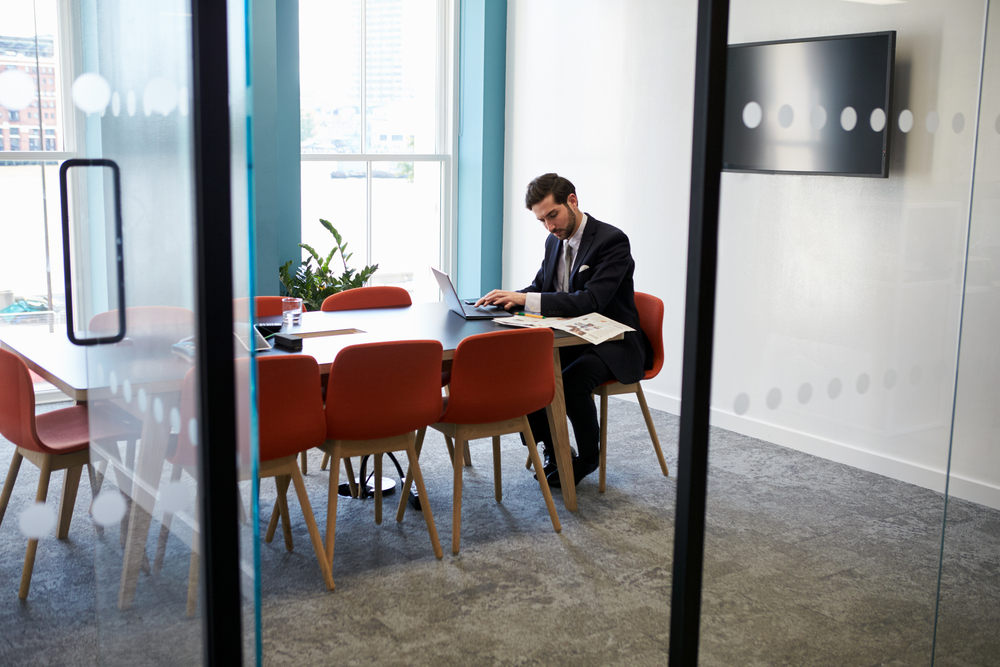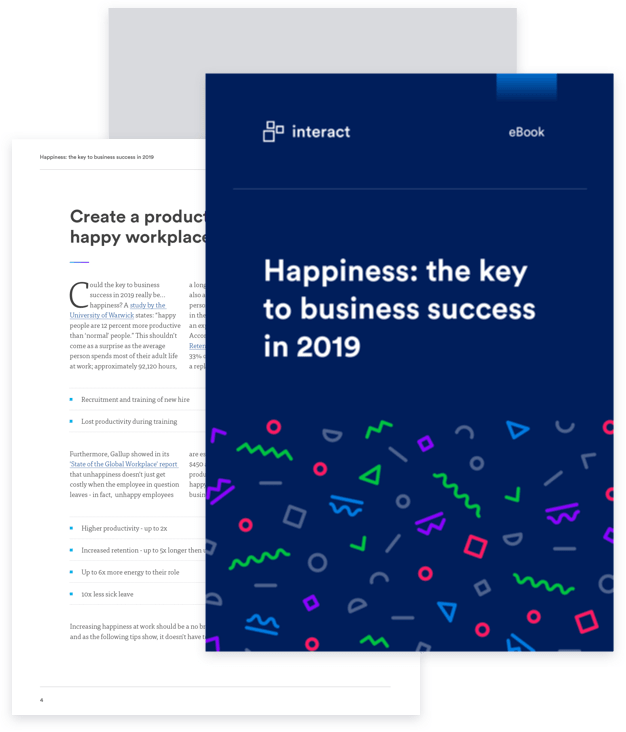Is our obsession with collaboration killing creativity?

Organizations worldwide hail the power of collaborative working to
drive productivity, problem-solving, innovation and more. But is the focus on
driving extrovert behaviors – getting us talking, communicating, coming
together – coming at the expense of the time and space needed to formulate our
own ideas?
Does collaboration come at a cost?
We live in a society that values the extrovert.
Celebrities, sports personalities, comedians, politicians: we publicly celebrate those that exude charisma, confidence, the gift of the gab. In a world built around social interaction, those with outgoing personalities seem to have the upper hand.
It’s a trend that’s reflected in the workforce. A Sutton Trust analysis of BBC data found that highly extroverted people had a 25% chance of being in a higher-earning job; extroverts are also more likely to secure a promotion or land leadership roles. Those who shout loudest really do seem to be able to get ahead.
In her critically-acclaimed TED talk ‘The power of introverts’, Susan Cain argues that our most important institutions are now designed for extroverts: our schools, our workplaces. Collaboration, teamwork, collective working, and communication are hailed as the ‘must-have’ desirable traits and we’re now tailoring everything about how we operate – from recruitment to office layout and the technology we use – to facilitate and encourage them.
Susan Cain advocates for the introvert in her talk, below:
However, in overlooking the needs of those who have a more introverted personality, we could be doing our people and organizations a huge disservice. Research shows introverts may actually be the better leaders; the quieter ones among us also exhibit desirable behaviors such as creativity, empathy, being self-starters and independent workers.
Ultimately, success doesn’t come from having an all-extrovert or all-introvert workforce; like many things in life, it’s a question of balance. So, is our preoccupation with extrovert behaviors damaging our workplaces?
Happiness: The key to business success in 2019
The introvert vs. extrovert debate
Around a third to a half of the population are introverts. Contrary to popular belief, it’s actually different from being shy. Introverts and extroverts differ in how they respond to stimulation, and particularly social stimulation. While extroverts crave and thrive in highly stimulating environments, introverts do better in quieter, low-key states.

Of course, the two aren’t absolute states: no-one is completely introverted or completely extroverted. It’s more of a spectrum; we also tend to adapt our personalities and behaviors according to the people or situations we find ourselves in. While we may demonstrate extroverted behaviors including confidence and charisma in the company of our friends or family, we may become more introspective in unfamiliar situations. However, most of us lean more one way than the other.
The labels have created a divide that can be, the Guardian argues, unhelpful.
Stereotypes surrounding each embed a ‘us vs. them’ mentality – and despite the perception that extroverts ‘have it easy’, the reality is far from true. A study suggests extroverts are at a disadvantage when it comes to anxiety and mental health issues, more likely to suffer burnout and struggle to ‘switch off’ for much-needed restorative time. They’re more attuned to how others around them feel, and in times of boredom, unhappiness or unease, they may feel the need to rectify the situation, even at the expense of their own feelings.
Introverts, on the other hand, may struggle to get their ideas or opinions noticed; can experience stress when facing continued distractions or excessive social stimulation; are routinely passed over for leadership roles due to a perceived lack of ambition.
Ultimately, both personality types face different challenges. The problem now is that as a society, we’ve built a stereotype around each: and the value we assign to either side of the debate has impacted how we now operate.
Happiness: The key to business success in 2019
Catering to the extrovert: the problem with collaborative set-ups
When I went to school, it was to desks laid out in rows, all facing the teacher sat up front. Now, it’s a different story. My son’s school embodies the typical new-age classroom setup: pods of desks, groups of kids all facing each other, expected to act as committee members and to work collectively on all topics.

Of course, this is valuable for nurturing skills such as teamwork, respect for other people’s ideas and perspectives, the ability to discuss, debate, share ideas. These are all life skills we need to be bringing into the workplace.
However, as humans, we tend to mirror and mimic the behaviors and opinions of those around us. Psychology research shows this is something we do without even realizing; and by extension, we’ll often find ourselves falling in line with the opinion of the loudest or most charismatic person in the room.
The trouble is, as Susan Cain points out, there’s zero correlation between being the best talker and having the best ideas.
So, when my son’s teacher decided to bring the idea of collaborative working to a creative writing exercise, I’m sure he had the best of intentions. It’s just that when you get a group of ten-year olds to brainstorm and talk ideas through with each other, you probably shouldn’t be too surprised when you end up with eight slight variations of the same story.
In our workplaces, it’s a similar picture. Most of us work in open spaces, subject to the noise and gaze of our coworkers. We’re often subjected to numerous group meetings, stand-ups, on-the-spot conversations and interruptions. A new age of workplace interior design is championing café-style break out areas, designed to support people coming together; the days of the private cubicle or closed-door offices are largely behind us. Collaboration and conversation are actively encouraged, even forced on us.

I’m not saying we need to kill off collaborative working. It’s an approach that has proven time and again to be invaluable in situations such as customer service provision or problem-solving.
For example, in the healthcare industry, there’s a shift towards ‘holistic’ care where different agencies and professionals come together to deliver better patient care. It’s shown to result in more positive outcomes and cut down on unnecessary tests, delays, or duplicated effort. And I’m definitely not calling for a return to the cubicle-enclosure days of the 1960s.
However, as a self-proclaimed introvert? I have to say – forcing collaboration may be coming at a cost.
Happiness: The key to business success in 2019
Turning up the quiet: why solitude matters

Even when we’re not physically with people, we’re constantly connected. Thanks to our always-on digital age, we’re now slaves to the ping of a new IM, email, notifications. It’s viewed as the new addiction: when younger generations acknowledge they can’t even go to the bathroom without their cellphones or watch a movie without checking Facebook, we know we have a problem. True quiet and ‘me time’ is very hard to come by.
Admittedly, as an intranet software provider, we’re guilty of playing a role in facilitating this ‘always on’ climate. Our entire offering is built on the idea of connecting people, information, organizations. We understand the business value of collaboration and our software is designed to support it.
But as organizations, we need a better balance between bringing people together and protecting the need for solitude.
Solitude is shown to be a crucial ingredient for creativity. For the more introverted personality, it ensures they can generate ideas away from the distortion of group mentality. It aids greater productivity, reduces stress, allows for processing of information and the formulation of opinions. For some people, solitude is the air that they breathe.
It also takes an average of 23 minutes to refocus when we’re interrupted. If you’re attempting a solitary task in an open space, busy environment, consider how much time is wasted when forced collaborative situations generate constant interruptions.
Despite this, we tend – as organizations, and society as a whole – to make introverts feel guilty about wanting to go off by themselves. It’s perceived as antisocial, even a cause for concern. When people are quiet, we ask them what’s wrong. We feel individuals are being ‘rude’ when they don’t join in; we raise an eyebrow when a manager plugs in the earphones, or books out a meeting room to get away from their team.

The holy grail: the yin and yan of solitude and collective working
The point of this exercise isn’t to eradicate collaborative working. However, as leaders and organizations, we need to adopt a proactive attitude to recognizing and creating space for introvert behaviors.
This first requires acknowledging the value of solitude. Or, as Susan Cain puts it, “Stop the madness for constant group work. Just stop it.” When we accept that not every task requires a collective effort and that quiet time isn’t the bad guy, we can start changing the culture in our organizations.
If you’re more of the introverted persuasion, consider scheduling ‘quiet time’ just as you would meetings. Put up the digital ‘Do Not Disturb’ by shutting down the emails, turning off the notifications, changing your status to busy. Book out that meeting room. If you have a team, explain why you’re taking time; it will show others this is acceptable practice and encourage others to follow suit. If you can’t move, use earphones to indicate you’re in the zone.

If you’re looking to get ideas or input from the group on something, give everyone a heads up first. By scheduling a meeting and letting staff know ahead of time, you give them the time and space for individual thought and creative thinking. Ask everyone to email over their ideas before you meet. This creates an agenda for discussion, drawing out the ideas of introverts who may be passed over in the shadow of the more outgoing extrovert in a group situation.
Consider your office layout and the use of different types of spaces for different needs. A balance of open plan, group-focused environments with quieter ‘nooks and crannies’ for those much-needed times of solitude will elicit better results.

If you don’t have that flexibility in-house, consider a working policy that will allow for staff to work from home or even take an hour out in the local coffee house if they’re feeling overloaded in a busy office environment.
Creativity and collaboration can, and should, co-exist. When we cater to both sides of the spectrum, the healthy balance will speak for itself with happier staff, better outcomes, faster resolution of problems, and greater innovation. Once we understand that one type isn’t better than the other, we’ll be well on our way.

